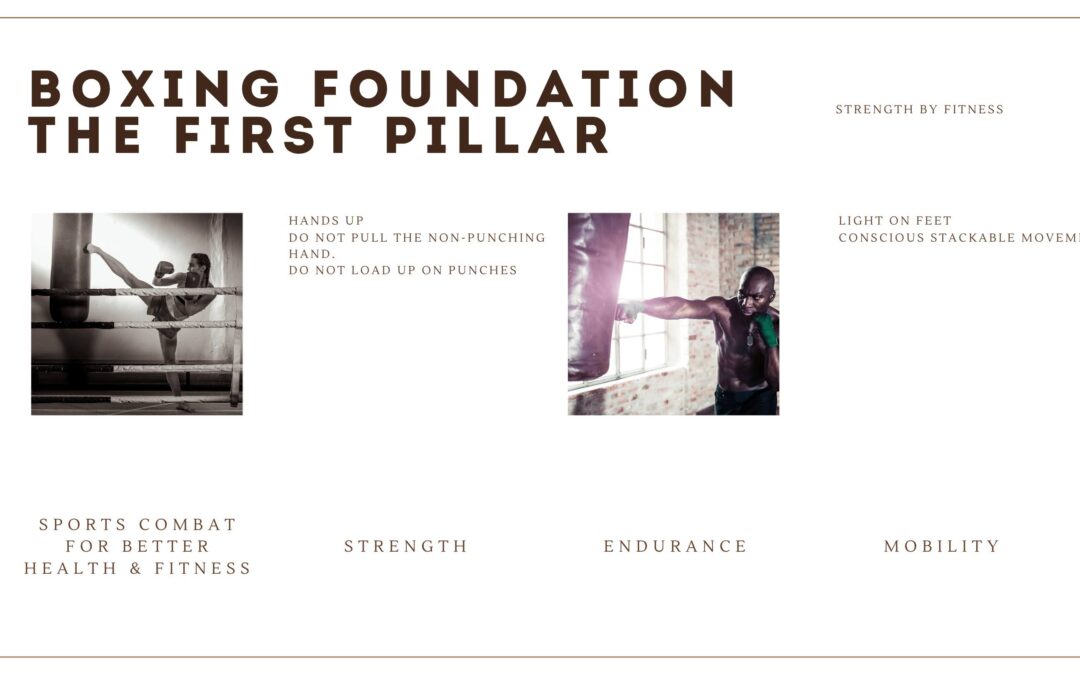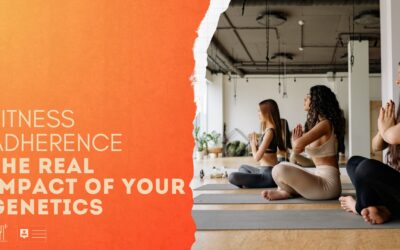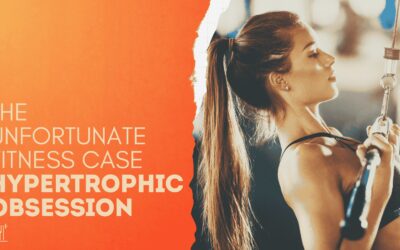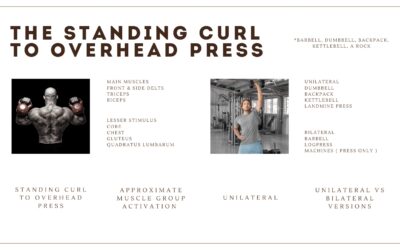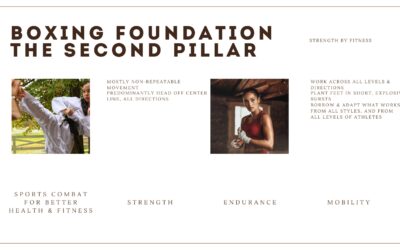Strength By Fitness Exercise Library: Boxing Foundation, The First Pillar. Every good martial artist needs a good, solid foundation to build stackable techniques and movement upon. This holds true even if you only include weekly sports combat in your fitness life for the fun, and wonderfully beneficial exercise and outcomes it provides.
A good foundation makes for a better, more beneficial exercise level for you, while also allowing you to be a vastly better martial artist, healthier, and fitter human being. That last thing obviously matters a great deal, even if you only train for fun, health, and fitness. Also important, as a great bonus, if you ever need to defend yourself, having a capable combat sports foundation has never hurt anyone.
In our Boxing Foundation series, you will learn how to move, guard, and box properly, no matter your martial arts preference.
Creating a great foundation that will never go out of style, no matter how advanced and skilled you eventually become. As you eventually become advanced enough, you will be able to build upon and vastly expand your foundation, and even start to master when to break it.
Welcome to Strength By Fitness fact-based fitness life & coaching.
Boxing Foundation.
The First Pillar.
There are so many layers and aspects to learn and master in the world of martial arts, even if it’s just a form of body combat exercise modality for you.
As such I will cover some of those variations in our Boxing Foundation series.
Do not miss our other articles in our Combat Sports Foundational Series.
Five Foundational Boxing Pillars
Hands Up.
Do not pull the non-punching hand.
Do not load up on punches.
Move with light feet & intentionally explosive
Conscious stackable movements
Some Coach input on our foundational boxing pillars.
Any type of sports combat modality will provide lifelong progression, and stimulus of skill-based exercise as well as muscular adaptations, cardiovascular health benefits, increased mobility, endurance, and intense, athletic work capacity. At Strength By Fitness, we include all forms of martial arts as a cardiovascular fitness modality under the umbrella term “boxing” or sports combat.
Martial arts is, of course, so much more than just another cardio tool, but it’s not strength training. So it belongs in the same cardio slot in your fitness plan as running, jogging, swimming, skipping rope, hiking, rucking, climbing, rowing, biking, skiing, and whatever else you might do for your cardiovascular health and fitness capacity.
Now, it is important that you understand that these foundational pillars are not meant to never be broken. They are meant as an important foundation to build upon.
Providing better exercise and better combat sports skills. There are many variations and options for how to, and when to break these boxing pillars.
But, unless you are already very advanced, learning good foundations as your perpetual basics will keep you on a very rewarding lifelong trajectory while keeping you efficient. fit, healthy, and proficient.
Hands Up.
As with every other foundational principle, hands up is not meant to never be broken. There are many ways of boxing and doing martial arts, where you implement other stances and guards to great effect.
Neither does hands up equal sticking your gloves permanently to your eyebrows, no you have many different variations of a higher guard, and all the other guards and stances, and none of them are exclusively meant to be used all the time.
They all serve a good, useful purpose.
But hands up is a very beneficial foundational habit to learn and master, very likely the most beneficial and widely used guard and coaching cue to reinforce, for good reasons.
It will improve your head defense greatly, no matter what kind of high guard you favor. This won’t just make you a better fighter; that’s much harder to hit in the head.
It will also help save our brain health too since repeated blunt force trauma to the head has no upsides.
So, hands up should be your basic guard foundation.
As such, familiarise yourself with all the variations of a high guard, and experiment with all variations.
Learn to turtle up behind your hands.
Master the high, long guard in all its different versions.
Learn how to be active with your high guard, block and counter incoming attacks, not in big sweeping movements that will leave you open to a skilled opponent, but learn how to do it with deliberate, small movements so you are always defended, and always in the right position to counter punch, block, elbow or otherwise control, and interfere your opponents techniques.
Some principles.
What one hand is doing should be unilateral compared to your other hand. So, if you are striking or blocking with hand A, do not pull hand B away from its high guard position.
Keep your non-punching hand high up around your face. If that means close to your face, or in front of your face, at a further distance is much less important.
Return your punching/blocking hand to its high guard as soon as possible. No matter what you did, do not drop your active striking hand after your punch managed to hit, got blocked, or missed your opponent.
Learn to punch from that high guard and have your hands return to its high guard position around or in front of your face between striking and or blocking.
This doesn’t just foster better defense, it builds perpetually stackable offense & defense.
In the video below, Gabriel Varga demonstrates some aspects of “Hold your hands up”.
That habit can be a high guard against your head. As in Gabriel’s video. Or a longer and more active high guard in front of you that’s used to actively block, counter, and lock up your opponent’s attacks.
Do not pull the non-punching hand.
Not pulling or wildly swailing around your non-punching hand just because you are punching or blocking with your other hand serve the same purpose as the hands up habits.
You have 8 limbs on your body, learn to control the individual movement of all of them, no matter what you are doing with the active main limb.
What I mean is this: If hand A is punching, hand B, and both of your legs should not involuntarily do things. Be conscious of your movement of each limb. Martial arts is a game of chess, a physical version of chess, but nonetheless a game of chess.
If hand B and elbow B is doing a jab that directly go into a step in slashing elbow, hand A should be kept high to protect your face, but dont just be passive. Perhaps you are quick enough to get a cross inside that jab + step in combo, perhaps you push hand A into a high long guard as you step in. Perhaps Hand A in fact needs to actively block or lock up your opponent’s counter.
The same thing goes for your legs and feet. How do you move your feet as you punch, kick, and block? Do you switch stances? If not, why not?
Everything has to have a conscious thought and justification for why it is happening.
Do you include a knee in that combo, do you step in, bounce back, pivot to the side, take a turn? Perhaps that jab+cross/step in elbow combo ends with a bob, pivot, and a 45 kick to the tummy, head, arms, or legs of your opponents.
Be intentional with your movement from all of your limbs. Far too many fighters involuntarily let their non-punching hand, and limbs move about with no conscious awareness and control as they block, kick, knee, elbow, or punch with their main limb.
Do not be that guy, people. Someone will read your habits and punish you quickly.
Five Foundational Boxing Pillars
Hands Up.
Do not pull the non-punching hand.
Do not load up on punches.
Move perpetually light & intentionally explosive
Punch with small movements
Do not load up on punches.
Here is another important foundation, and the sooner you embrace it, the better off you will be with your striking.
Yes, you can load up on punches and kicks, and you will gain a little bit more power by doing so. But at the expense of them being slower, and more importantly, very easy to see.
Good martial artists will read any telegraphed attack, and either avoid it, block it, or counter it before you can land your technique. So, learn to do all of your 8 limb attacks without telegraphing them, be it by loading up or in any other way, shape, or form.
The big exception to this is, of course, feints.
Doing fake techniques, to trick your opponent into a response that leaves them open for your real attacks, is one of those intellectual chess moves great fighters learn to master.
A sidenote.
When I talk about fighters, I am not talking about you going into real fights. You are a healthy fit, living, breathing person, and athlete, and we are doing this for exercise and reaping better fitness, health, minds, and bodies.
But all of these fundamental pillars make you fitter, because they will provide better workouts, as well as actually make you a far better martial artist, too. So learning proper basic big pillars is a win in every way there is.
Move perpetually light, & intentionally explosive.
This one refers to you becoming fit enough to move with light, explosive feet, legs, and movements.
From being light and springy in your every step, to having relaxed, snappy kicks and punches. This is a step-by-step process, and the more excess body fat you have, the harder it will feel.
But that’s ok, like with everything in fitness, it’s relative to your starting point. So you will slowly, over time, become better and fitter. In movement and techniques. It’s a lifelong process, so never stop, never give up.
It’s for good reasons that it can take decades to obtain a higher black belt in most traditional martial arts. So, don’t stress about it, see it as a lifelong thing, just as running and strength training is for life too.
The explosive part has to do with how those light, fleeting, effortless movements will need to explode into powerful, explosive, sprint like bursts of movements every now and then.
This is where martial arts and sports combat exercise challenge your every type 2 fiber. From explosive, and very fast movements, no matter if that’s forward or backwards, a pivot or laterally. To punches, elbows, knees, and kicks that level up their power and speed in the blink of an eye back to that effortless and fleeting lower effort movement.
Learning how to utilise this wave of effort and speed is not only crucial as a great martial artist, but its also a big fitness and health boosts, allowing you to train continually across different effort zones for 20 to 60 minutes straight.
Just like an interval run, or an ice hockey game.
Punch with small movements.
Punching and kicking, or just moving your body with small movements saves you energy, because there’s no wasted effort. But it also saves you from getting countered. The bigger your movements, the easier it is to read you and counter you.
Bigger movements are also slower.
Like every other foundational pillar, this doesn’t mean that you should never make use of bigger, more telegraphed movement patterns. There’s a perfect room and place for looping techniques, jumping,g spinning kicks, and big, athletic, and perhaps even acrobatic movement patterns. Everything is useful in the appropriate time and place.
But as a foundational pillar, learning how to strike and move with small, effortless movements will make you better, faster, more agile, and responsive.
And that’s nothing but a big win and a big boost in skills.
This is not the end of our foundational lessons. Our next entry will soon be published and talk about many other things your head movement.
For now, I will leave you with this to contemplate upon: Learn to move with your feet closer to the ground, but light and snappy.
Work with your lead foot first, letting it go in the direction you wish to move first, with your rear foot following directly after.
If you are moving backwards, this becomes the reverse, because your back foot is now the lead foot. Same if you are moving to the right, depending on your stance, the foot that is furthest to the right is the foot you move first.
Sometimes you will break this, and great fighters break it at times, with great benefits. But the main pillar is to rarely cross your legs or move your feet together. And very rarely do you wish to take big steps, a big step prolongs the time you will be unable to alter your direction and respond to your opponent’s movements.
So shorter steps are faster and more mobile. But rarely is not the same thing as always.
Sports combat is a featured aerobic fitness option in many of our public, and private fitness plans, link down below.
At Strength By Fitness we make use of sports combat as a fun, and beneficial regular aerobic fitness option. You do not have to train martial arts in a proper martial arts gym to benefit from this wonderful exercise modality. You can find jump straight into weekly strength training, running and combat sports by clicking on the link down below.
Related content
Bodyweight Fitness Plan
Boxing Foundations: Movement from feet to head
recent articles
Genetics vs Fitness Habits: Part IV. Exclusive Member Article.
Good habits will always move everyone in the right direction. Your genes then decide just how far your ceiling goes. For every single person on the planet, this means becoming way healthier and fitter over time, and as long as you maintain those habits, the positive outcome won't go away.
Regular Exercise Habits For Children Provide Massive Benefits All Through Life
Fitter kids rapidly become healthier kids.
These fitter and healthier kids eventually go on to become much fitter and healthier adults with a higher quality of life, better physical capacity, work performance, cognitive health, and ageing trajectories.
Assuming they maintained their healthier habits and weekly fitness routine as adults.
Ergo, as adults, we need to promote and enable regular sports and health-friendly habits in food, exercise, and daily physical activity for all kids around the world.
What is fitness? The case against making hypertrophy the n1 exercise pillar.
Strength By FitnessWhy is it a slight health & fitness problem, relatively speaking, that the world has fallen in love with making hypertrophy the be-all end-all of strength training? Well that is what we will talk about in todays fact-based Strength By Fitness...
High-protein sweetcorn, tofu nuggets, and pepper fritters meal.
Who doesn’t enjoy a tasty, nutritionally rich pepper fritter meal served with crunchy, protein-filled nuggets? Well, that is exactly what Strength By Fitness is handing out with this nutritionally rich, high-protein, higher-SPC soy nugget, pepper fritter recipe.
As always, with our many meals, this one is absolutely packed with health-promoting nutrients per unit of energy.
Enjoy.
Mike & Mida
Exercise Library: Standing Curl to Overhead Press
The overhead press is a fabulous exercise, no matter which version you are doing. Machine, dumbbells, barbells, kettlebells, bilateral, unilateral, standing, seated. They are all amazing. But the Unilateral, standing curl to overhead press is my favorite shoulder press variant. Read on to see why Strength By Fitness Coach Mike prefers this bad boy.
Exercise Library: Boxing Foundation, The Second Pillar. Movement.
Welcome to Strength By Fitness’ second boxing foundation article: The second pillar, movement from feet to head.
Bob, weave, slip, and move, learn to cut angles, and strike across all levels and from all angles and sides. Learn and absorb from everyone.
We appreciate you
so stay healthy & never stop training
Contact
Private In-App Messaging is Available For All App + Coaching Clients
Adress
Coaching Is Available Online Via App on IOS & Google Play, and In-person, On-location.
